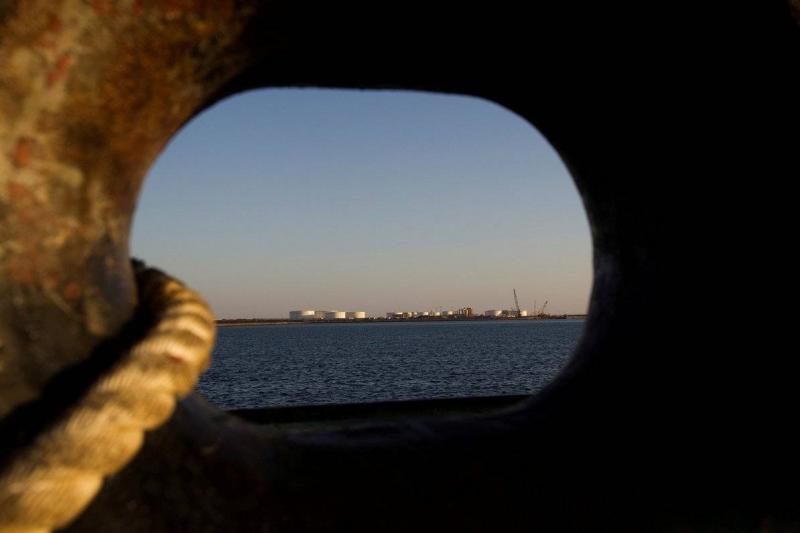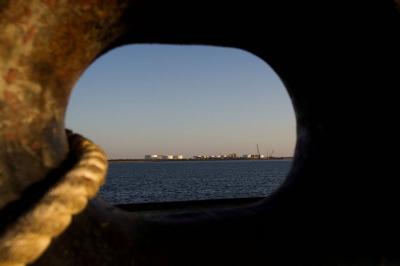The war between Israel and the Islamic Resistance Movement (Hamas) has raised the risk of a wider conflict in the region that could involve Iran and other factions. Analysts and market observers say that the conflict could lead the United States to tighten sanctions on Iran, which may push Tehran to take retaliatory actions against ships in the Strait of Hormuz. The Marshall Islands registry, one of the countries that flags the most ships in the world, noted last week an increasing threat of attacks within Israeli territorial waters and the Gulf, the Strait of Hormuz, the Gulf of Oman, and areas bordering the Red Sea for vessels with ties to Israel or the United States.
**What is the Strait of Hormuz?**
- The strait separates Iran from Oman.
- It connects the Gulf to the north with the Gulf of Oman and the Arabian Sea to the south.
- The strait is 33 kilometers wide at its narrowest point, but the navigable channel is only three kilometers wide in both directions.
- The UAE and Saudi Arabia are seeking other routes to avoid the strait, including laying more oil pipelines.
**What is its importance?**
- About one-fifth of the world's oil consumption passes through the strait daily. Data from Vortexa Analytics showed that an average of 20.5 million barrels per day of crude oil, condensates, and refined products navigated through the Strait of Hormuz from January to September 2023.
- It handles most of the crude oil exports from Saudi Arabia, Iran, the UAE, Kuwait, and Iraq, all OPEC member countries.
- Almost all of Qatar's liquefied natural gas production also passes through the strait, which is the world’s largest exporter of LNG.
- Vortexa indicated that approximately 80 million tons or 20 percent of global LNG flows pass through the strait each year.
- JP Morgan stated in a memo last week, "If the conflict expands to include the closure of the Strait of Hormuz, the world's busiest oil shipping channel, it would stop oil trade in the region, leading to rising oil prices." Importantly, despite threats from Iran in past years to close the strait, it has never been executed.
**Impact of U.S. Sanctions**
- The United States imposes sanctions on Iran to stop its oil exports.
- Iran has threatened to disrupt oil shipments through the Strait of Hormuz if the U.S. attempts to choke its economy.
- The U.S. Fifth Fleet, based in Bahrain, is tasked with protecting commercial vessels in the region.
**Increasing Tensions**
- The Israeli army is preparing for a ground invasion aimed at eliminating Hamas, increasing the risk of a broader conflict.
- Iranian Foreign Minister Hossein Amir Abdollahian appealed on Wednesday for Islamic countries to impose oil embargoes and other sanctions on Israel, but OPEC sources dismissed such a scenario.
- In 1973, Arab oil-producing countries led by Saudi Arabia imposed an oil embargo against Western supporters of Israel during its war with Egypt, targeting Canada, Japan, the Netherlands, Britain, and the United States.
- Although Western countries were the primary buyers of crude oil produced by Arab countries at that time, Asia is now the main buyer of OPEC oil.
**Past Incidents in the Strait of Hormuz**
- During their war from 1980 to 1988, both Iraq and Iran sought to disrupt each other's oil exports in what was known as the "Tanker War."
- In July 1988, the U.S. warship Vincennes shot down an Iranian passenger plane, killing all 290 on board. Washington described it as an accident, while Tehran claimed it was a deliberate attack.
- At the beginning of 2008, the U.S. reported that Iranian boats threatened three U.S. Navy vessels in the strait.
- In July 2010, the Japanese oil tanker M. Star was attacked in the strait. A militant group called "Abdullah Azzam Brigades," linked to al-Qaeda, claimed responsibility for the attack.
- In January 2012, Iran threatened to close the Strait of Hormuz in response to U.S. and European sanctions aimed at its oil revenues to halt Tehran's nuclear program.
- In May 2015, Iranian ships seized a cargo ship in the strait and fired at a Singapore-flagged tanker, which was said to have destroyed an Iranian oil platform.
- In July 2018, former Iranian President Hassan Rouhani hinted that Iran may disrupt oil passage through the Strait of Hormuz in response to U.S. calls for reducing Iranian oil exports to zero.
- In May 2019, four ships, including two Saudi oil tankers, were attacked off the UAE coast near Fujairah outside the Strait of Hormuz.
- In January 2021, Iran seized a South Korean-flagged tanker in Gulf waters and arrested its crew.
- In December 2022, the U.S. military stated that an Iranian Revolutionary Guard vessel approached within 150 yards of U.S. warships in the strait.
- In May 2023, Iran seized two oil tankers while they were passing through the strait.
- In July 2023, the U.S. Navy stated it intervened to prevent Iran from seizing two commercial tankers in the Gulf of Oman, noting that Iran "harassed about 20 commercial vessels flying international flags or attacked them or seized them" since 2021.




